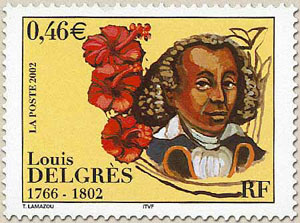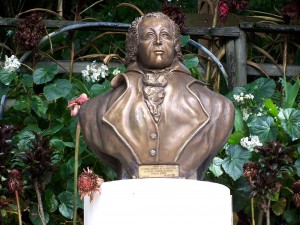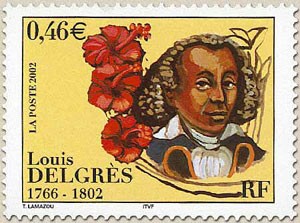
GOOD MORNING, P.O.U.!
Louis Delgrès
Louis Delgrès (August 2, 1766 – May 28, 1802) was a mulatto leader of the movement in Guadeloupe resisting reoccupation (and thus the reinstitution of slavery) by Napoleonic France in 1802.[1]
Delgrès was born free in Saint-Pierre, Martinique.[2] An experienced military officer who had a long background fighting Great Britain in the many wars that country had with Revolutionary France, Delgrès took over the resistance movement from Magloire Pélage after it became evident that Pélage was loyal to Napoleon. Delgrès believed that the “tyrant” Napoleon had betrayed both the ideals of the Republic and the interests of France’s colored citizens, and intended to fight to the death.
The French army led by Richepance drove Delgrès into Fort Saint Charles, which was held by the slaves. After realizing that they could not overcome the French forces and refusing to surrender, Delgrès left with 400 men and some women. At the battle of Matouba on May 28, 1802, Delgrès and his followers ignited their gunpowder stores, committing suicide in the process, in an attempt to kill as many of the French troops as possible.[3]
In April 1998, Delgrès was officially admitted to the French Panthéon, although the actual location of his remains is unknown.[1] Delgrès’ memorial is opposite that of Toussaint Louverture, leader of the Haitian Revolution, the location of whose remains are also a mystery.

(SOURCE: Wikipedia)
Fort Louis Delgrès
Guadeloupe, France
This fortress was occupied from the seventeenth century onwards to defend the bay of Basse-Terre against attacks by the English.
In 1802, Fort Saint-Charles, as it was known in those days, played an important role in the conflict between Commander Louis Delgrès and General Antoine Richepance. The latter had been sent by Bonaparte to restore order in the colony and to re-establish slavery.
Led by Delgrès, the insurgents put up strong resistance at Basse-Terre, before being forced out of the fort on May 22 and onto the higher ground of Matouba. The fortress was evacuated through a postern gate built into the parapet wall which overlooks the Galion River. Among the insurgents was Joseph Ignace who led a group for Pointe-à-Pitre to create a diversion. They were killed during the battle of Baimbridge on May 25.
Another group, led by Delgrès, found refuge on Danglemont Plantation on the higher ground of Matouba, where they intended to put up resistance.
Surrounded by Richepance’s troops, Delgrès and a number of his men opted to blow up the plantation rather than surrender.
(SOURCE: Slavery and Remembrance)


